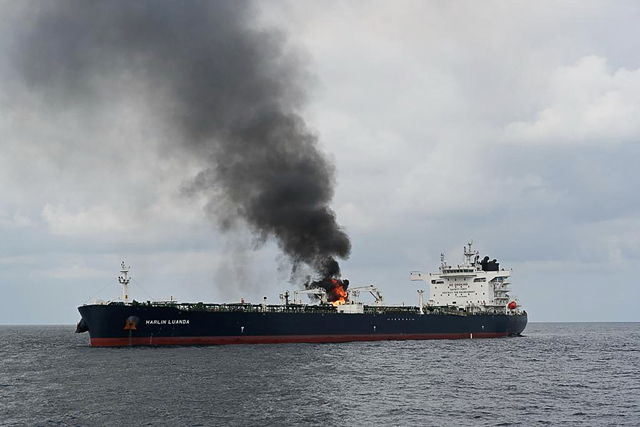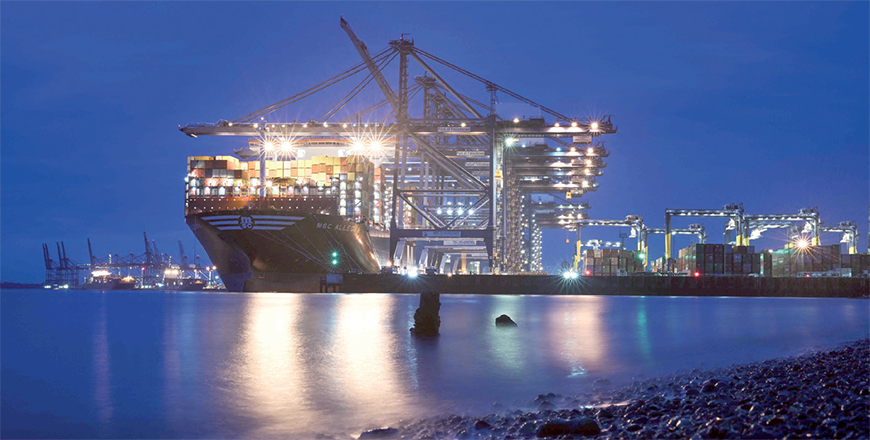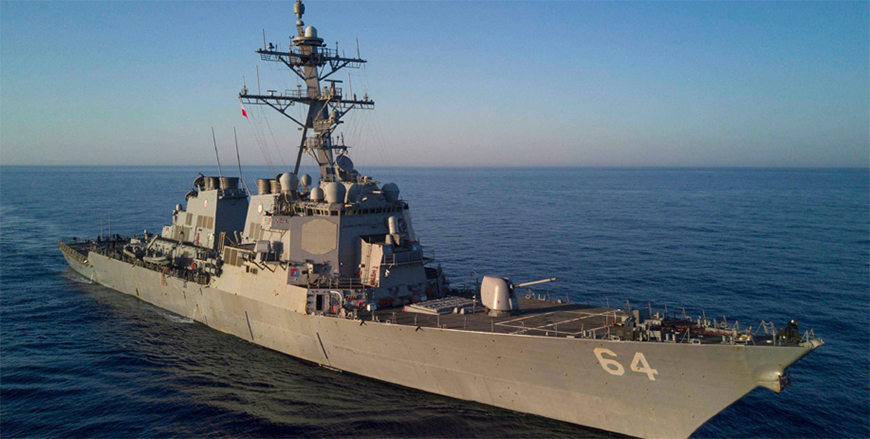You are here
US strikes Houthi target in Yemen after attack on British oil tanker
By AFP - Jan 27,2024 - Last updated at Jan 27,2024

This handout photograph taken on Saturday and released by the Indian ministry of defence shows smoke billowing from the British oil tanker MV Merlin Luanda after the Indian Navy deployed the INS Visakhapatnam following a distress call by the vessel while transiting through the Gulf of Aden in the Arabian Sea (AFP photo)
SANAA — US forces struck an anti-ship missile in Houthi-held Yemen that they said was ready to fire early Saturday, hours after the Iran-backed rebels caused a fire on a British tanker in the Gulf of Aden with a similar munition.
US and British forces have launched joint strikes aimed at reducing the Houthis' ability to target vessels transiting the key Red Sea trade route, attacks the rebels say are in support of Palestinians in the Gaza Strip, where Israel is at war with Hamas.
Washington has also carried out a series of unilateral air raids, but the Houthis have vowed to continue their attacks.
The US military's Central Command (CENTCOM) said it had carried out another strike early Saturday on a Houthi "anti-ship missile aimed into the Red Sea and which was prepared to launch".
"Forces subsequently struck and destroyed the missile in self-defense," it said on social media platform X.
The Houthi's Al-Masirah television on Saturday said the US and the UK launched two air strikes on the port of Ras Issa in Yemen's Hodeida province, which hosts the country's main oil export terminal.
There was no immediate confirmation from the United States or Britain, and the Houthis did not provide details on the attack or the extent of the damage.
The previous evening, the British oil tanker the Marlin Luanda operated on behalf of trading giant Trafigura Group was hit by missiles fired by Yemeni naval forces, said the Houthis' military spokesman, Yahya Saree.
"The strike was direct, and resulted [in] the burning of the vessel," he added.
CENTCOM later confirmed the hit, saying: "The ship issued a distress call and reported damage. USS Carney [DDG 64] and other coalition ships have responded and are rendering assistance."
Trafigura said on Saturday no injuries or casualties had been reported, adding, however, that the fire on the vessel had yet to be extinguished.
“The crew is continuing efforts to control the fire in one of the ship’s cargo tanks with support from military vessels,” it said in a statement on its website.
On Friday, the Houthis also fired an anti-ship ballistic missile from Yemen towards the Carney in the Gulf of Aden, CENTCOM said.
“The missile was successfully shot down by USS Carney. There were no injuries or damage reported,” it added.
Global trade disruption
Risk monitor Ambrey said earlier that a Panama-flagged oil tanker “reported seeing two blasts” in the Gulf of Aden, a report that was corroborated by the British navy’s United Kingdom Maritime Trade Operations (UKMTO). No damage was reported.
The security firm said the missiles exploded about 1.6km from the India-affiliated oil tanker and 200-300 metres above the waterline. UKMTO said they detonated in the water.
The Houthis began targeting Red Sea shipping in November, saying they were hitting Israeli-linked vessels to show solidarity with Palestinians in Gaza.
They have since declared US and British interests to be legitimate targets as well.
The United States is leading a coalition to protect Red Sea shipping, an effort the Pentagon has likened to a highway patrol for the waterway.
Washington is also seeking to put diplomatic and financial pressure on the Houthis, redesignating them a terrorist organisation last week after previously dropping that label soon after President Joe Biden took office.
The attacks by the rebels, who are part of an anti-Israel, anti-West alliance of Iranian proxies and allies, have disrupted trade in the Red Sea, which carries around 12 per cent of international maritime traffic.
Several shipping firms are avoiding the waterway, instead taking the longer and more expensive route around the Cape of Good Hope in South Africa.
This new pressure follows difficult years for the industry during the Covid-19 pandemic, when freight rates reached unprecedented levels due to disruptions to supply chains.
Related Articles
SANAA — US forces struck an anti-ship missile in Houthi-held Yemen that they said was ready to fire Saturday, hours after the Iran-backed re
DUBAI — A new explosion was reported off Yemen on Thursday after overnight US strikes targeted 10 attack drones and a ground control station
DUBAI — A series of attempted attacks using missiles and a sea drone targeted a merchant vessel off areas of Yemen held by Iran-backed Huthi



















